Brewer's Garden
The unique collection of herbs, spices and sugars we use in Brewer's Garden make any beer a specialty brew, whether you desire a bitter, sweet, spicy or floral taste and aroma. Visit our webstore for the complete Brewer's Garden product line.
With Brewer's Garden it has never been easier for beer and wine makers to find all the herbs they need. Take a walk through our Brewer's Garden and let our unique Herbs and Spices stimulate your creative brewing talents.

Herbs are plants which delight the senses and offer a rewarding combination of beauty and usefulness. For centuries herbs and spices have been regarded as essential to daily life. We believe the herbs, spices and sugars found in Brewers Garden are no less essential to the creation of unique specialty beer, wine and beverages.
With Brewers Garden it has never been easier for beer and wine makers to find all the herbs they need in one convenient location. Take a walk through our Brewers Garden and let our unique herbs and spices stimulate your crative brewing talents.
Rose Hips Rosa canina
 Used in wines, teas, speciality beer and confections, rose hips are a versatile fruit/herb. Rich in vitamin C, the rose hip shells with the seeds removed are the best type to use for wines as the seeds can add undesirable tannins.
Used in wines, teas, speciality beer and confections, rose hips are a versatile fruit/herb. Rich in vitamin C, the rose hip shells with the seeds removed are the best type to use for wines as the seeds can add undesirable tannins.
Dried Woodruff Asperula odorata
Woodruff was one of the essential garlands hung in medieval European churches in preparation for holidays. The distinctive scent of fresh-cut hay and vanilla gives an exhilarating flavour to wines, punches and beer. Woodruff is considered by the FDA to be safe for use in alcoholic beverages but caution is advised for other internal uses.
Mugwort Artemisia vulgaris
As the name implies, Mugwort was traditionally used in mugs of beer before the popularity of hops. Europeans frequently stuffed pillows with mugwort and hops to bring good and vivid dreams. Mugwort has also been used as a medicinal tea for centuries and is proven to have antibacterial and anti-inflammatory properties. It can be used as a cure for many common ailments; from digestion problems to asthma. It can even be used as an insect repellent.
Wormwood Artemisia absinthium
The principal ingredient in the legendary liqueur Absinthe, wormwood use dates back to before 1600 BC. Its powerful bitterness was prized by brewers, as were its strong antibacterial properties. Wormwood has a mild minty, licorice aroma, but it has extremely strong herbal bittering properties. The FDA advises against the internal use of wormwood as it contains thujone, which can be harmful if injested in large amounts.
Juniper Berries Juniperus communis
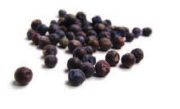 Usually known as the principal flavouring in gin, it is also used to flavour beer and other beverages. Native Americans have utilized juniper for its healing powers and to relieve arthritis. In folk lore, juniper planted outside a door kept out witches who had to correctly count its needles before entering the house.
Usually known as the principal flavouring in gin, it is also used to flavour beer and other beverages. Native Americans have utilized juniper for its healing powers and to relieve arthritis. In folk lore, juniper planted outside a door kept out witches who had to correctly count its needles before entering the house.
Dried Elderflowers Sambucus nigra flora
These natural wonders are good for the outside as well as the inside. Elderflowers infused in creams have been used to soften skin, smooth wrinkles, fade freckles and soothe sunburn. They can also be used on their own for making wine or can be added to elderberry wine to enhance flavour. On their own, they produce a wine compared to a muscatel. Hot elderflower tea, like chamomile, can make a smoothing nightcap and is said to offer natural relief for the common cold.
Dried Elderberries Sambucus nigra
Native to the British Isles, the small dark elderberry makes an excellent "port" style wine. The appearance of berries on the bushes is said to have signalled farmers when to sow their wheat. The berries are also reputed to have been used to make one of the first black hair dyes in ancient Greece.
Sweet Orange Peel Auranthium dulcis pericarpium
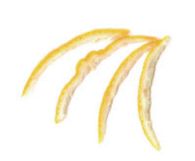 While a cousin to the Florida orange, this sweet variety will not give your beer a metallic taste like the domestic version. If you're familiar with the taste of cointreau or Grand Marnier then you will be thrilled with the flavour that sweet orange peel can add to your Belgian style strong ales and special holiday brews.
While a cousin to the Florida orange, this sweet variety will not give your beer a metallic taste like the domestic version. If you're familiar with the taste of cointreau or Grand Marnier then you will be thrilled with the flavour that sweet orange peel can add to your Belgian style strong ales and special holiday brews.
Sweet Gale Myrica gale
Also called "Bog Myrtle" and "Badge of the Campbells," Sweet Gale is a delicious shrub with fragrant wood and leaves abundantly in the Northern Hemisphere especially on the Scottish moors and bogs. It has been used as a substitute for hops in Yorkshire in a named appropriately "Gale Beer." The seeds and leaves have also been used in soups and stews, perfumes and candles. This is not surprising as it is in the same family as Bayberry, which is a popular candle scent. Used as a tea infusion it has been known to ease stomach disorders. This relativelyunknown herb is well suited for Holiday beers.
Sassafras Potpourri Sassafras albidium
Perhaps no herb or spice is more difficult to find commercially than sassafras. While abundant in the South Eastern United States, Sassafras root bark contains safrole which has been proven to cause cancer in laboratory animals. Its sale for internal use has been banned by the FDA. While this aromatic "potpourri" is the same root bark historically used to make root beer, we do not advocate its use in this manner. Consult a healthcare professional before use.
Indian Sarsaparilla Hemidesmus indicus
The herb takes its name from the Spanish "sarza" meaning a bramble, a "parilla," a vine. It is a misconception that sarsaparilla is the primary flavour of the beverage containing its name. Refreshing sarsaparilla is made from a root beer type base to which has been added to beverages to help improve mouthfeel and head retention, but mainly for its medicinal properties as an agent to cure mouth sores, rheumatism and dropsy.
Cinnamon Sticks Cinnamomum cassia
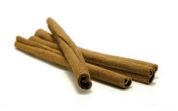 Known principally as a flavouring for savory dishes in Asia and Africa and for its use in pastries and beverages, cinnamon has also found sits way into recipes for spicy holiday ales and ciders, sodas, coffees and teas.
Known principally as a flavouring for savory dishes in Asia and Africa and for its use in pastries and beverages, cinnamon has also found sits way into recipes for spicy holiday ales and ciders, sodas, coffees and teas.
Licorice Root Glycyrrhiza glabra
Do not confuse the flavour of licorice with that of anise, which is not related and it is quite different when tasted side by side. Licorice has been used for everything from cough remedies to ulcer cures. The root imparts a very characteristic flavour and is surprisingly sweet. It contains glycyrrhizin, a substance 50 times sweeter than sugar, and is often added to chocolate to enhance sweetness.
Paradise Seeds Aframomum melegueta
Also called "grains of paradise," "Guinea grains" and "Melegueta pepper," these small seeds look like cardamom but have a character all of their own. The spice is native to West Africa and during medieval times was used to flavour food. It has also been used as a pepper substitute. While it does have a peppery "zing" it also has notes of citrus and an "earthy" pine aroma.
Ginger Roots Zingiber officinale
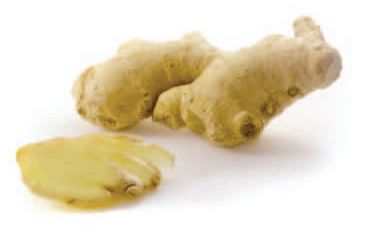 Probably the most widely used herb for holiday beer, the rhizome grows in the tropics and was brought by conquistadors to the New World via Jamaica.
Probably the most widely used herb for holiday beer, the rhizome grows in the tropics and was brought by conquistadors to the New World via Jamaica.
Wintergreen Leaves Gaultheria procumbens
While many people confuse wintergreen with mint, they are not related in any way. Wintergreen has long been used as an herbal remedy for arthritis, swollen joints and sore muscles. It goes by many names: teaberry, checkerberry, dearberry, spiceberry, boxberry and even a tea party. The latter refers to its use during the American Revolution as a substitute for heavily taxed British tea.
Bitter Orange Peel Aurantium amarae pericarpium
Also called "Curacao orange peel" these green-gray peels are one of the most popular specialty herbs on the market. They are used commercially by domestic brewers to duplicate the beer styles that put Belgium on the brewing map. While not very bitter, they are a key ingredient in Belgium style white beers.
Cardamom Seed Elettaria cardamomum
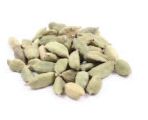 Cardamom is a distinctive spice from the same family as ginger. Its flavour, which has been described as a "spicy cola", combines well with coriander, cumin and orange, and often all are used together in specialty Belgian and Holiday Style beer.
Cardamom is a distinctive spice from the same family as ginger. Its flavour, which has been described as a "spicy cola", combines well with coriander, cumin and orange, and often all are used together in specialty Belgian and Holiday Style beer.
Coriander Seed Coriandrum sativum
Ancient Egyptian and Sanskrit texts document the use of coriander for more than 3,000 years. The Chinese once believed the herb conferred immortality and in the Middle Ages it was put into love potions as an aphrodisiac. Coriander is now widely used in specialty and Belgian style beers.
Star Anise Illicium verum
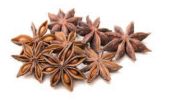 In times past, fresh star anise was chewed after each meal to aid digestion and to sweeten the breath. Used in specialty Belgian and holiday style beers, star anise has a flavour similar to licorice, yet is dramatically different when tasted side by side.
In times past, fresh star anise was chewed after each meal to aid digestion and to sweeten the breath. Used in specialty Belgian and holiday style beers, star anise has a flavour similar to licorice, yet is dramatically different when tasted side by side.
Heather Tips Calluna vulgaris
It is both the flowers and the greenery of this wonderful herb which impart a leasing aroma and smooth bitterness to beers. It is especially appropriate for a Scotch ales known as Fraoch. With a flavour similar to a subtle chamomile/mint blend with a hint of lavender, heather pairs well with honey. It is also great for tea, with reputed calming qualities.
Belgian Candi Sugar derived from sugar beets
Available in Clear, Amber (75L) and Dark (275L), this important Belgian sugar is made from sugar beets and is used by professional brewers to produce some of the unique beer styles indigenous to Belgium. The diamonds are formed by the slow crystallization of highly concentrated sucrose syrup. The degree of colour results from natural caramelization during the heating process. No additional colouring or flavouring agents have been added.
Vanilla Beans Bourbon Vanilla planifolia
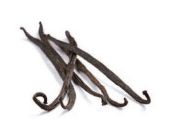 Vanilla is an ancient flavoring used by the Aztecs, who added it to chocolate. Bourbon Vanilla beans are one of the highest quality vanilla beans on the market. Brewers have most recently used vanilla beans to flavour cream stouts and holiday beers via a "dry hopping" method. Vanilla is used in many recipes for making cordials and soda pop from scratch. It is an important ingredient in root beers and cream sodas.
Vanilla is an ancient flavoring used by the Aztecs, who added it to chocolate. Bourbon Vanilla beans are one of the highest quality vanilla beans on the market. Brewers have most recently used vanilla beans to flavour cream stouts and holiday beers via a "dry hopping" method. Vanilla is used in many recipes for making cordials and soda pop from scratch. It is an important ingredient in root beers and cream sodas.


